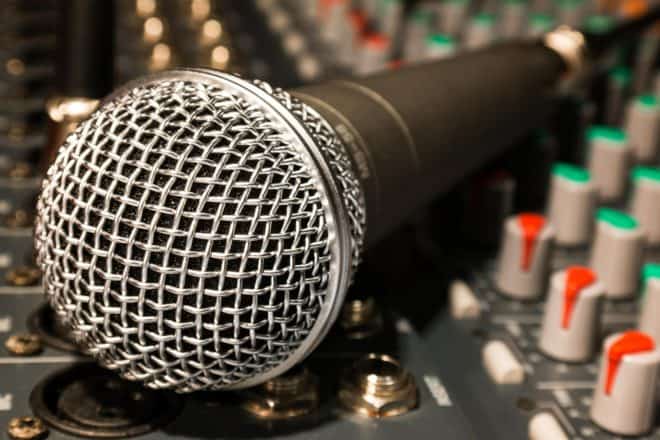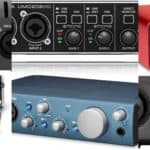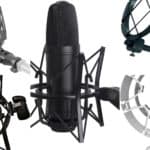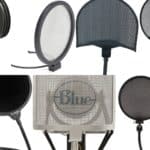6 Best Home Studio Tricks to Improve Your Podcast Sound Quality

All professional recordings have three main characteristics that take them from amateur to polished–volume levels are consistent, all speakers are audible, and there’s limited to no background noise interruptions. When chasing top quality sound, there are a lot of factors to consider but to tackling your podcast recording environment first will help reduce the effects of noise pollution. Outside of the pros, many podcasters set up shop in a home studio which presents a handful of challenges professional recording booths eliminate. To get you on the same playing field as the big guys, we’re diving into the six best ways to improve your setup so your podcast is easy on the ears.
1. The room matters
The first step in putting together your home studio is deciding which room to use, but not all potential recording spaces are created equally. The easiest tip is avoiding square or rectangular shaped rooms as the parallel walls are the perfect surfaces for sound to bounce off of. Instead, go for an area that’s as asymmetrical as possible to reduce this effect from the start. Also be aware of the room’s flooring. Carpeted rooms may sound like the best bet but they can wear out quickly, especially if your home studio is a high traffic area. Instead, aim for hard flooring like tile or hardwood then incorporate area rugs to ramp up the acoustics.
2. Move away from the noise you can’t control
We easily tune out the everyday noises around us but your podcast microphone will capture them all. As you consider which room is best for your home studio, pay attention to which space has the most noise pollution. Watch for excess windows where you’ll inevitably hear a siren whizz by or your noisy neighbor revving up their lawn mower at the worst possible moment. Also be aware of the sounds your home makes. Don’t choose the room where you can hear the elevator doors open and close or the one where the radiator loves to hiss unexpectedly. Keep an eye on the spaces that are removed from your family or roommate’s daily lives so you don’t pick up their unwanted footsteps either.
3. Turn off the noise you can control
Is that your computer’s fan humming and can you hear the TV from one room away? Set yourself up for success from the get go and eliminate all the noises you can control. Start by unplugging or removing anything that creates unwanted noise from inside or nearby your recording space. Try using a towel or piece of foam under your computer to muffle the fan and time your recordings when the least amount of people are home. Also, treat your home studio like a movie theater and silence everyone’s cell phone.
4. Furniture is your friend
You chose the perfect room and cleared it of all errant noises, now it’s time to fill it back up with the right furniture. You’re looking for pieces that will aid in sound absorption and diffusion in order to reduce any echoes or reverberations. Think big bookcases filled with books, drapes over windows, area rugs, couches, blankets, duvets, pillows, and even mattresses. Search for materials in your home that will dampen sound and keep it from reflecting off of flat surfaces.
5. Organize the room
Once you’ve compiled the right sound absorption pieces, the next key aspect is where to put them in your studio. Your filled bookcase or couch should be centered on your studio’s back wall to diffuse excess sound. Another DIY trick is propping up a mattress directly behind you and your microphone to shield it from picking up incoming sound reflections. Move your area rugs under your mic setup and speakers to reduce their reverberations as you record. If you’re still not happy with the acoustics, the cheapest solution is throwing a big blanket or duvet over you and your microphone. While the setup may be a bit crude, it’ll help muffle any echoes you want out of your episode recordings.
6. Don’t forget to test it
Once you’re happy with the setup, it’s time to put your home studio to the test before sitting down to record. Dial up your recording software, hit the red button, and capture about 30 seconds of silence. Then do it again but this time rehearsing a portion of your latest episode. Playback both recordings and trust your ears here, you’ll instinctively pick up on the instances when the quality is off. Try to identify the sources of any offending sounds and continue testing until you like what you hear. Make sure to test the room around the time of day you plan to record for the most real-life scenario of how the room will sound.













Comments
Comments are closed.